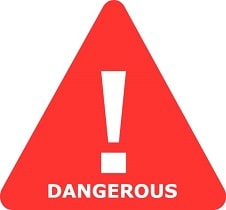Is 3-Ethyl-3-(p-aminophenyl)-2,6-dioxopiperidine Safe in Breastfeeding
Question
I am a breastfeeding mother and i want to know if it is safe to use 3-Ethyl-3-(p-aminophenyl)-2,6-dioxopiperidine? Is 3-Ethyl-3-(p-aminophenyl)-2,6-dioxopiperidine safe for nursing mother and child? Does 3-Ethyl-3-(p-aminophenyl)-2,6-dioxopiperidine extracts into breast milk? Does 3-Ethyl-3-(p-aminophenyl)-2,6-dioxopiperidine has any long term or short term side effects on infants? Can 3-Ethyl-3-(p-aminophenyl)-2,6-dioxopiperidine influence milk supply or can 3-Ethyl-3-(p-aminophenyl)-2,6-dioxopiperidine decrease milk supply in lactating mothers?
3-Ethyl-3-(p-aminophenyl)-2,6-dioxopiperidine lactation summary

- DrLact safety Score for 3-Ethyl-3-(p-aminophenyl)-2,6-dioxopiperidine is 7 out of 8 which is considered Dangerous as per our analyses.
- A safety Score of 7 indicates that usage of 3-Ethyl-3-(p-aminophenyl)-2,6-dioxopiperidine may cause toxic or severe side effects in breastfed baby.
- Our study of different scientific research indicates that 3-Ethyl-3-(p-aminophenyl)-2,6-dioxopiperidine may cause moderate to high side effects or may affect milk supply in lactating mother.
- Our suggestion is to use safer alternate options rather than using 3-Ethyl-3-(p-aminophenyl)-2,6-dioxopiperidine .
- Usage of 3-Ethyl-3-(p-aminophenyl)-2,6-dioxopiperidine is in contradiction to breastfeeding hence if it is must to use 3-Ethyl-3-(p-aminophenyl)-2,6-dioxopiperidine and there is no better alternative available then breastfeeding shall be stopped permanently or temporarily.
- Score calculated using the DrLact safety Version 1.2 model, this score ranges from 0 to 8 and measures overall safety of drug in lactation. Scores are primarily calculated using publicly available case studies, research papers, other scientific journals and publically available data.
Answer by Dr. Ru: About 3-Ethyl-3-(p-aminophenyl)-2,6-dioxopiperidine usage in lactation
We are working on a comment for this product.
Alternate Drugs for Antineoplastic agents. ATC L01
Busulfan(Dangerous)
Cisplatin(Unsafe)
Cyclophosphamide(Dangerous)
Doxorubicin(Dangerous)
Etoposide(Dangerous)
Hydroxyurea(Low Risk)
Mercaptopurine(Safe)
Mitoxantrone(Dangerous)
Vincristine(Dangerous)
Methotrexate(Low Risk)
Imatinib(Unsafe)
Trastuzumab(Unsafe)
Bevacizumab(Low Risk)
Rituximab(Low Risk)
Alemtuzumab(Low Risk)
Fluorouracil(Dangerous)
Paclitaxel(Dangerous)
Carboplatin(Dangerous)
Cetuximab(Unsafe)
Brentuximab Vedotin(Low Risk)
Ipilimumab(Unsafe)
Everolimus(Unsafe)
Thioguanine(Dangerous)
Dacarbazine(Dangerous)
Vinorelbine(Dangerous)
Bleomycin(Dangerous)
Vinblastine(Dangerous)
Nivolumab(Unsafe)
Nilotinib(Unsafe)
Dasatinib(Unsafe)
Cladribine(Dangerous)
Erlotinib(Unsafe)
Pazopanib(Unsafe)
Capecitabine(Dangerous)
Docetaxel(Dangerous)
Carmustine(Dangerous)
Exemestane(Dangerous)
Gemcitabine(Dangerous)
Dactinomycin(Dangerous)
Epirubucin(Dangerous)
Fluorouracil Topical Solution(Low Risk)
Idarubicin-Hcl(Dangerous)
Ifosfamide(Dangerous)
Melphalan(Dangerous)
Mitomycin(Dangerous)
Oxaliplatin(Dangerous)
Pentostatin(Dangerous)
Procarbazine(Dangerous)
Teniposide(Dangerous)
Thiotepa(Dangerous)
Tretinoin Oral(Dangerous)
Vinorelbine Tartrate(Dangerous)
Imatinib Mesilate(Unsafe)
Altretamine(Dangerous)
Aminoglutethimide(Dangerous)
5-Aminolevulinic Acid(Low Risk)
Hydroxycarbamide(Low Risk)
Anastrozole(Dangerous)
Arsenic-Trioxide(Dangerous)
Asparaginase(Dangerous)
Bexarotene(Dangerous)
Cytarabine(Dangerous)
Chlorambucil(Dangerous)
Chlormethine(Dangerous)
Daunorubicin(Dangerous)
Rubidomycin(Dangerous)
Amethopterin(Low Risk)
Vincaleukoblastine(Dangerous)
Doxorubicin Hydrochloride(Dangerous)
Vlb(Dangerous)
Mechlorethamine(Dangerous)
Platinum Diamminodichloride(Unsafe)
4-Amino-10-methylfolic Acid(Low Risk)
5-ALA(Low Risk)
5-Fu(Dangerous)
6-Mercaptopurine(Safe)
6-Thiohypoxanthine(Safe)
6-Thioxopurine(Safe)
MTX(Low Risk)
Cytosine Arabinoside(Dangerous)
Daunomycin(Dangerous)
Actinomycin D(Dangerous)
Deoxycoformycin(Dangerous)
